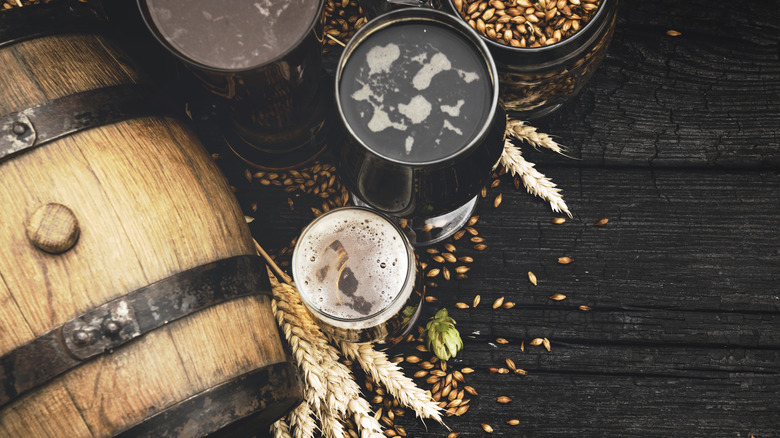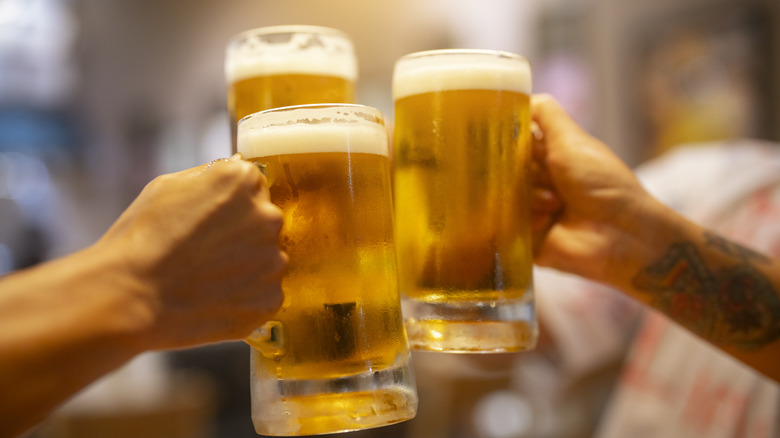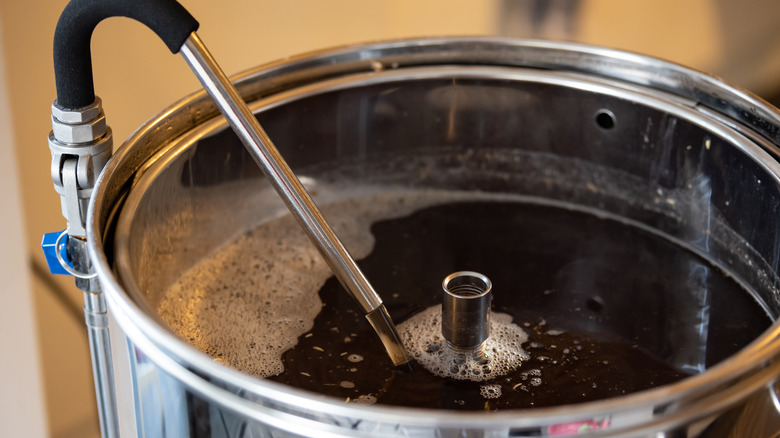What Are Esters In Home-Brewed Beer And What Do They Do?
When assessing a beer's quality, home-brewers will often speak of esters. But what exactly are esters, you may wonder. Esters are the fruity sweet aroma you experience when selecting the ripest carton of strawberries, for example. In beer, esters are created during fermentation when alcohol reacts with organic acids to create fruity aromas — though they can also be introduced by adding fruit to the brew.
Esters are naturally present in flowers and fruits, and chemically derived esters are used in flavorings and aromas in many foods and household products. That lemon-scented dish detergent you just used likely got its pleasant smell from esters. And the delightful aromas in esters are an all-important component for some styles of beer.
Perhaps you want to make the perfect beer to bring to a barbecue that'll pair well with everything. Or you want to make a strong lager for some grilled mesquite beer brats. No matter what your plans, be forewarned: When brewing beer, esters can be a blessing or a curse depending on the style you intend to make.
Esters in beer
Creating esters without adding fruit is done intentionally in brewing certain beer styles such as German wheat beers or hefeweizens, Belgian pale ales, English bitters, and strong lagers. In these styles, the esters create essences described by cicerones (beer-tasting experts — just like sommeliers for wine, but for beer) and beer aficionados as citrusy, fruity, or having banana, pear, apple, black currant, or even bubble gum-like flavors and aromas. These aromatic and flavorful results are exactly what is expected for these styles of beer.
But esters can also wreak havoc with a home brew if not properly controlled. Off-tastes of solvents, plastics, heavy perfume, or acetone are not an enjoyable drinking experience for most people. And those fruity flavors, though considered positive for some beer styles, are not welcome at all in others. You wouldn't, for example, expect or want any sweetness or fruity flavors in an American pilsner.
Controlling esters is in the chemistry
A good brewer is also a chemist. According to the American Homebrewers Association, ester production can be controlled during brewing in several ways: wort composition, yeast selection, and fermentation conditions. For example, using a tall, narrow fermenting vessel can lower the production of esters whereas shallow, wide ones tend to produce more.
All fermented beverages including wine, hard ciders, spirits, and, yes, beer begins with a sugary liquid — for wine it's grape juice, for cider, it's apple juice. For beer it is wort — an ultra-sweet liquid produced when sugars are extracted from grains in a steeping process. The sugars provide later-added yeast something to chow on which, in turn, produce carbon dioxide, flavors, and alcohol. That's fermentation in action. Higher levels of sugars, zinc, and certain acids in wort will result in more esters. Oxygen and lipids can impede esters from forming. So, choosing the right malts or extracts, yeast, and hops will have a direct impact on your esters.
There are thousands of yeast strains though not all are commercially available. Some yeast strains produce more esters than others. So, if you're making a wheat beer, you probably want to choose one with high ester-producing characteristics. Your home-brew supplier should be able to guide you to the appropriate ingredients to use for the style you want to brew. And don't forget, when brewing your own beer, sanitation is key.


